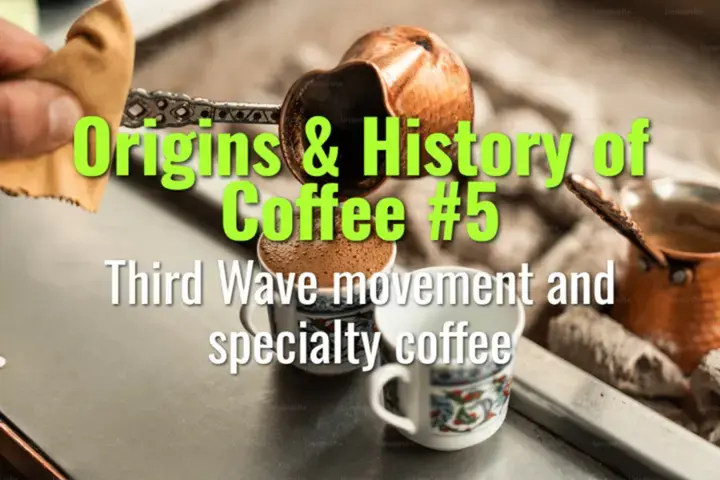Third Wave movement and specialty coffee
In this topic we explore the rise of the Third Wave coffee movement, how it redefined coffee as an artisanal product, and the role of specialty coffee in reshaping global consumption, trade, and culture.
- Coffee Basics Nerds
- 2 min read
Article 5 of 9 in Origins & History of Coffee/

Understanding the Third Wave
- Definition: The Third Wave refers to a cultural movement (1990s onward) that treats coffee as an artisanal food product—similar to wine—emphasizing quality, traceability, and craft.
- Three Waves context:
- First Wave (19th–20th c.): Industrial coffee—mass production, canned coffee, instant coffee.
- Second Wave (1970s–1990s): Coffee as an experience—Starbucks, Peet’s; focus on espresso drinks and café culture.
- Third Wave (1990s–present): Coffee as a craft—single-origin, direct trade, artisanal roasting, and brewing precision.
Core Values of the Third Wave
- Transparency: Highlighting farm, variety, process, and terroir on coffee bags.
- Direct trade: Roasters sourcing directly from farmers, aiming for ethical partnerships and higher farmer compensation.
- Quality control: Use of cupping scores (Specialty Coffee Association, 80+ points) to classify “specialty coffee.”
- Education: Baristas and roasters teaching consumers about extraction, brewing, and tasting.
- Innovation in brewing: Popularization of manual brewing methods (V60, Chemex, AeroPress, siphon).
Specialty Coffee Practices
- Roasting: Light roasts designed to preserve unique origin characteristics rather than mask defects.
- Brewing: Precision in grind size, water chemistry, ratios, and extraction.
- Cupping: Standardized sensory evaluation ensures consistency and sets quality benchmarks.
- Competitions: World Barista Championship and Brewers Cup showcase skill, creativity, and highlight global producers.
Social and Cultural Impact
- Consumer awareness: Coffee drinkers increasingly ask where, how, and by whom coffee was grown.
- Elevating producers: Farmers are celebrated as artisans, with recognition of specific farms and even individual lots.
- Café culture shift: Third Wave cafés emphasize minimalist design, transparency, and slow, deliberate brewing.
- Technology and apps: Digital scales, refractometers, and even apps for brewing precision became mainstream.
Timeline Highlights
- 1990s: Specialty Coffee Association of America (SCAA) standardizes cupping and quality metrics.
- 2000s: Direct trade models and micro-roasters emerge worldwide.
- 2010s: Third Wave cafés dominate urban centers; brewing competitions and coffee festivals rise.
Lasting Legacy
- The Third Wave movement redefined coffee from a commodity into a craft beverage.
- It empowered farmers, roasters, and baristas to collaborate transparently.
- It created a global culture of mindful consumption, where a cup of coffee tells the story of its journey from farm to cup.
You might also like:
- Tags:
- Specialty Coffee
- Grind Size
- Direct Trade
- Quality Control
- Cupping Scores
- Light Roasts
- Sensory Evaluation
- Water Chemistry
- Instant Coffee
- Brewing Methods
- Single Origin
- Baristas Roasters
- Roasters Baristas
- Ensures Consistency
- Lasting Legacy
- Roasting Brewing
- Cup Coffee
- Farmers Roasters
- Coffee Drinkers
- Espresso Drinks
- Brewers Cup
- Barista Championship
- Manual Brewing
- Coffee Experience
- Farm Cup